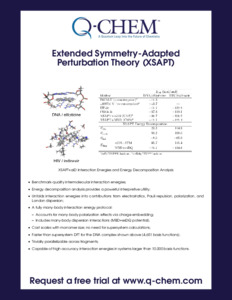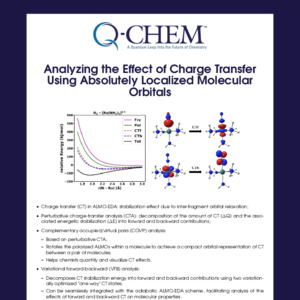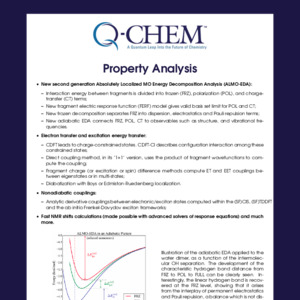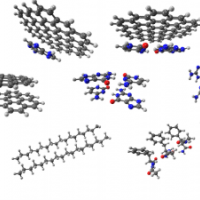Extended Symmetry-Adapted Perturbation Theory (XSAPT)
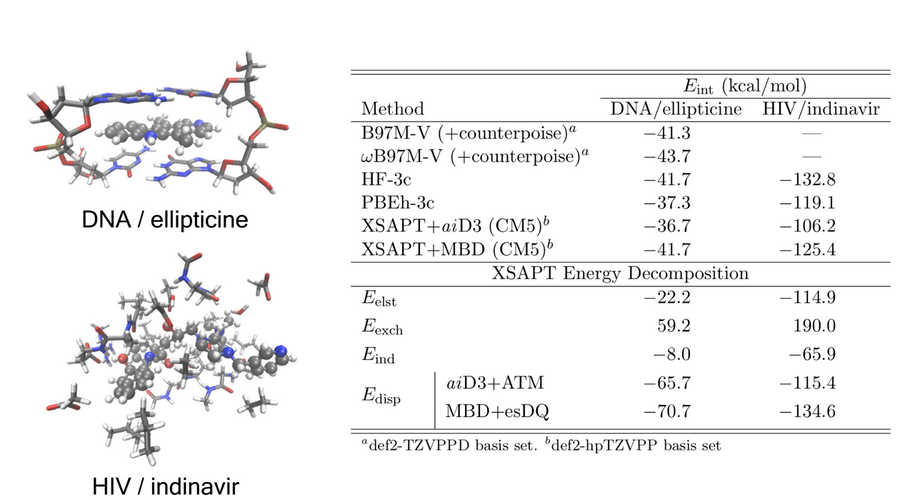
-
Benchmark-quality intermolecular interaction energies;
-
Energy decomposition analysis provides a powerful interpretive utility;
-
Unfolds interaction energies into contributions from electrostatics, Pauli repulsion, polarization, and London dispersion;
-
A fully many-body interaction energy protocol:
-
Accounts for many-body polarization effects via charge embedding;
-
Includes many-body dispersion interactions (MBD+esDQ potential).
-
-
Cost scales with monomer size; no need for supersystem calculations;
-
Faster than supersystem DFT for the DNA complex shown above (4,651 basis functions);
-
Trivially parallelizable across fragments;
-
Capable of high-accuracy interaction energies in systems larger than 10,000 basis functions.
Want to try Q-Chem?
